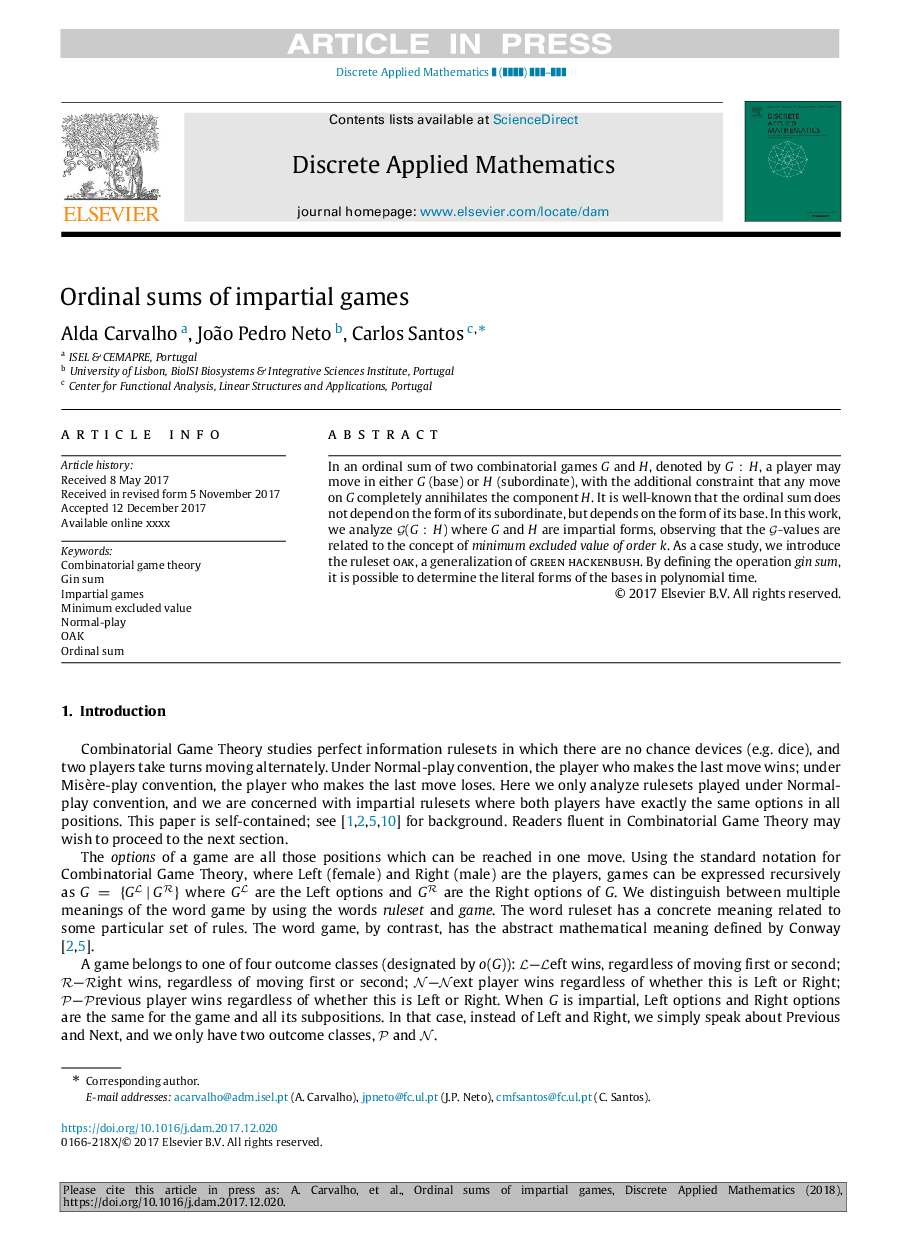| Article ID | Journal | Published Year | Pages | File Type |
|---|---|---|---|---|
| 6871178 | Discrete Applied Mathematics | 2018 | 7 Pages |
Abstract
In an ordinal sum of two combinatorial games G and H, denoted by G:H, a player may move in either G (base) or H (subordinate), with the additional constraint that any move on G completely annihilates the component H. It is well-known that the ordinal sum does not depend on the form of its subordinate, but depends on the form of its base. In this work, we analyze G(G:H) where G and H are impartial forms, observing that the G-values are related to the concept of minimum excluded value of orderk. As a case study, we introduce the ruleset oak, a generalization of green hackenbush. By defining the operation gin sum, it is possible to determine the literal forms of the bases in polynomial time.
Related Topics
Physical Sciences and Engineering
Computer Science
Computational Theory and Mathematics
Authors
Alda Carvalho, João Pedro Neto, Carlos Santos,
